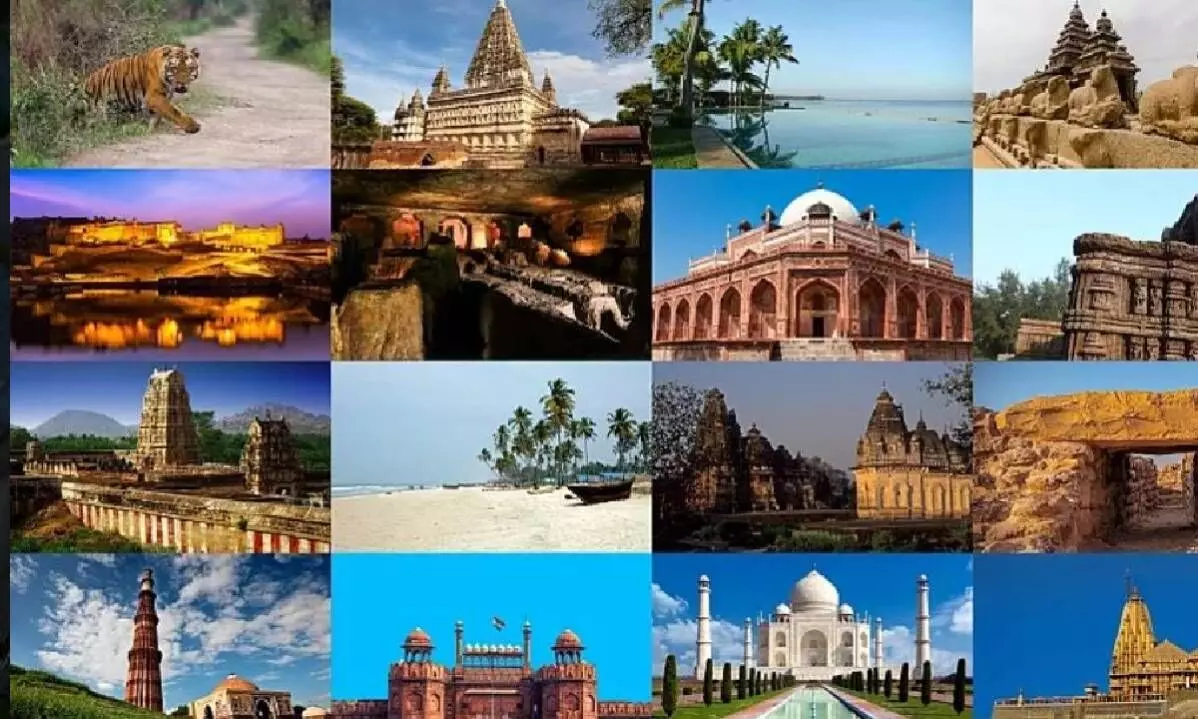Vacationing in any Indian tourist destination is quite affordable
In Hyderabad, the cost of living is way lower than in Mumbai or Delhi
image for illustrative purpose

When planning a trip within India, always consider the places you want to visit and what the weather will be like when you get here.
So, first, figure out the dates that are most convenient for you and your family. You must go about this exercise well in advance so that you can book your tickets at a much cheaper price. You should also search flight tickets on a weekday since flight tickets are relatively cheaper, which makes economic sense if you can find flights in the middle of the week. In the same way, avoid weekends, since flight prices are always higher.
Alternatively, you can also search for family vacation packages that area offered at a discounted rate by many travel sites and agents.
India aims to attract 75+ million international tourists every year by 2035. Currently, the Taj Mahal alone attracts over six million people every year.
The country has 40 UNESCO heritage sites, seven natural heritage sites, 32 cultural heritage sites and one natural-cultural heritage site.
Indian Railways is the largest train network in Asia. The world’s highest rail bridge in the world, the 1,315 metres long Chenab Bridge is in India-Jammu and Kashmir. It is 35 meters taller than the Eiffel Tower! There are 566 wildlife sanctuaries in the country. Places like the Ranthambore National Park in Rajasthan are global hubs for wildlife tourism.
Throughout the year, different places attract different types of tourists. The visitors need to keep the weather conditions of their chosen locations in mind finalizing their itineraries.
Spring: Want to experience the festival of colour, Holi, first hand? Visit India in spring during this festival with your family. But, spring in Northern and Central India may feel like summer. So, pick locations where you can stay indoors and have constant access to the pool most of the time. Or, pick cooler regions like Jammu and Kashmir or Northeast India.
Summer: There are several hill stations in India (Ooty, Shimla, Darjeeling, etc.) that experience pleasant, spring-like weather in summer.
Autumn: The tourist season peaks during autumn. October and November are good months to plan family trips to India.
Winter: The southern and western coastlines enjoy pleasant temperatures. Goa, Mumbai and Bangalore are the perfect places to celebrate Christmas or New Year’s with the family.
Try to spend at least two to four weeks with your family in India. Although most famous tourist spots are spread out, there are countless car or train travel options.
Flights, trains, private cars, and private busses – these are the most popular travel options for tourists in India. Travelling to different locations in a private car with a full-time driver is the best option for families.
One of the smartest ways to save money is to travel by overnight sleeper train, saving the cost of a hotel without eating into your precious sightseeing time. First class is comfortable but expensive, and you’ll be cocooned away from other travelers. Traveling in A/C 2-tier or 3-tier carriages or fan-cooled sleeper carriages is much cheaper, and you’ll get more chances to interact with local people.
Train reservations open 120 days before departure, and seats in desirable classes can fill up fast, pushing late-bookers into more expensive (or unreserved and less comfortable) seats. The easiest way to reserve seats is via online booking sites such as 12GoAsia; if you’re already in India, then book in person at the station.
In Mumbai, you’ll pay premium prices for rooms, food, and drink. It’s worth considering alternative and less-visited hubs, where similar travel experiences can be had for lower prices. Hyderabad, for example, is home to some of the country’s best biryani restaurants, bazaars, museums and Mughal architecture, but the cost of living is significantly lower than in Mumbai or Delhi. Instead of battling for a quiet spot on Goa’s packed beaches, think about visiting Puducherry with its promenades, surfing and beach yoga.
Most budget hotels offer twin, triple and family rooms with separate beds for multiple guests, which can slash your room bills. For example, a single room in a bungalow on Agonda beach in Goa can cost from $24 per night for single occupancy to $30 for three sharing a deluxe room. And if you so wish, an extra bed in a twin room can be put for a small surcharge.
While most taxis and auto-rickshaws have metres, many drivers are reluctant to use them, so negotiate a fare before the journey starts.

